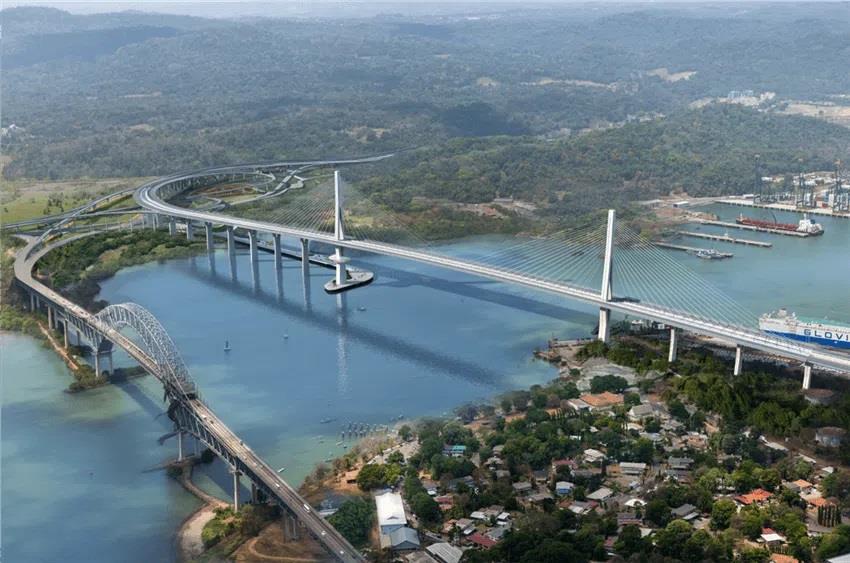
Sovereignty, Ownership, And The Panama Canal
- The 1903 agreement between the U.S. and Panama granted the U.S. control of the Canal Zone, but not ownership, as Panama retained sovereignty.
- The agreement was a result of Panama's independence from Colombia and the U.S.'s interest in building a canal.
- The Carter Administration oversaw the signing of a new treaty in 1977, which returned control of the Canal to Panama by the year 2000.
- President Trump's suggestion that the U.S.“take back” the Panama Canal is inaccurate and ignores the history of the agreement and subsequent treaty.

- President Trump's Inaugural Address criticized the Jimmy Carter Administration for giving away the Panama Canal:“which has foolishly been given to the country of Panama...We gave it to Panama and we're taking it back.” Nothing subtle here, but perhaps a misleading impression.
- Back in 1903, the Republic of Panama (herein Panama) gave the United States (herein U.S.) possession of the Canal Zone, but not title, or sovereignty. It was a use, like a lease with a payment to Panama, like rent. This was a busy time. Panama had declared independence from Columbia. The U.S. had tried to strike a canal deal with Columbia on similar terms; Colombia refused over sovereignty concerns and not enough money. Thus, the U.S. supported Panama independence, with the help of our navy. The first article of the deal was a security arrangement:“The United States guarantees and will maintain the independence of the Republic of Panama.” Panama became an American ally.
- Interest in a canal through the Isthmus of Panama went back to 1513, when a Spanish explorer discovered it. In the Nineteenth Century, the French builder of the Suez Canal, Ferdinand de Lesseps, began organizing money for a Panama Canal. He bought the“Wyse Concession” which was valid for 99 years. Construction was hard given malaria and the jungle wild life. Many died. Eventually, American lawyer William Nelson Cromwell began working on an American effort, while maintaining Panamanian independence. The French contractor, Philippe Bunau-Varilla, was also deeply involved.
- In June, 1902, the U.S. Senate approved the Panama project, authorizing the President to proceed. This was not colonialism, but a deal between sovereign states, sovereignty of the Canal Zone at the time of the treaty being in Panama instead of Colombia. The deal was expressed in the Convention for the Construction of a Ship Canal (Hay-Bunau-Varilla Treaty), November 18, 1903, ratification instruments were exchanged on February 26, 1904.

The language of Article II is useful:“The Republic of Panama grants to the United States in perpetuity the use, occupation and control of a zone...for the construction, maintenance, operation, sanitation and protection of said Canal with a width of ten miles...” In Article III the use is described as being as“if it were sovereign...to the entire exclusion of the exercise by the Republic of Panama of any such sovereign rights.” To have exclusive use of property as if it were sovereign for perpetuity is a form of ownership. I think we can conclude that the U.S. had an exclusive lease in perpetuity for which it paid rent, as indicated in Article XIV. Panama retained sovereignty over the whole, but deferred to the U.S. This was not colonialism, but the U.S. had a good deal.

Jimmy Carter and Omar Torrijos at the signing of the Panama Canal Treaty. ca. 16 June 1978.
That deal came to an end with the Jimmy Carter Administration. The new Panama Canal Treaty of September 7, 1977, cancelled all prior treaties. The American lease was over. The new treaty created a transition period looking forward to complete Panamanian control of the Canal by the year 2000. On December 31, 1999, Panama assumed that control. Carter believed this termination of U.S. rights was the“just” thing to do for the end of the Twentieth Century. The world was changing; there were many new nations after World War II recognized in the age of decolonization. The Canal was located on Panamanian sovereign territory. Carter believed Panama should control it. Domestic peace and patriotism in Panama were factors. Other transforming events occurred during the Carter Administration.

To me, the most significant was the recognition of the Peoples Republic of China (herein China) on December 15, 1978, following months of secret negotiations. It is ironic now that one of President Trump's major concerns for taking over the Canal is the influence of China there. Let's get used to it; many states of the world will be there using this international treasure. When the President of Panama heard of Mr. Trump's threats and his concern with the Chinese, he responded:“...every square meter of the Panama Canal and its adjacent area belong to PANAMA...There are no Chinese soldiers in the canal, for the love of God...” (12/26/2024). The use of force today is unthinkable. It would violate Panama's sovereignty and the UN Charter. Do we need a new security treaty for an old ally?

Legal Disclaimer:
MENAFN provides the information “as is” without warranty of any kind. We do not accept any responsibility or liability for the accuracy, content, images, videos, licenses, completeness, legality, or reliability of the information contained in this article. If you have any complaints or copyright issues related to this article, kindly contact the provider above.






















Comments
No comment